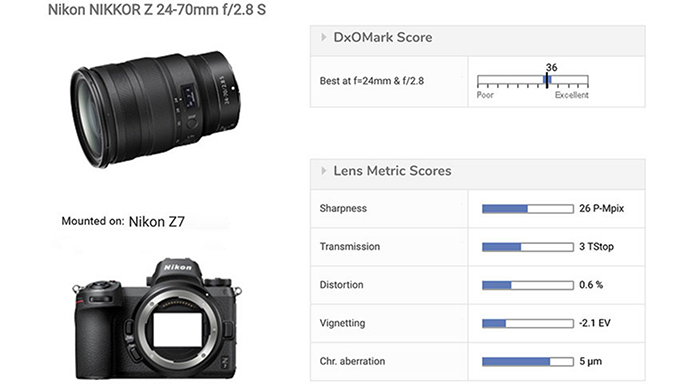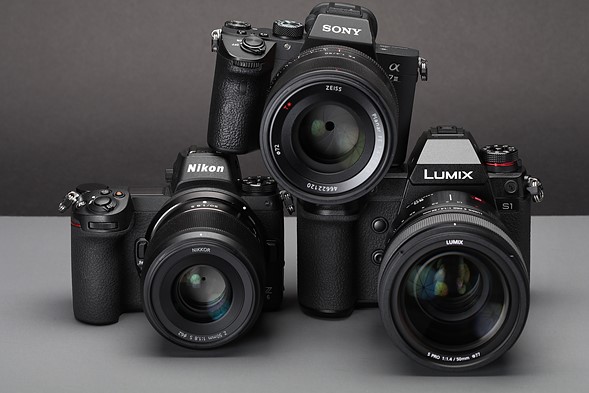Nikkor Z 24-70mm f/2.8 S review at DxO: “The new benchmark for 24-70mm lenses”

The Nikkor Z 24-70mm f/2.8 S got tested at DxO. The Conclusion is that it is “the new benchmark for 24-70mm lenses”:
Many professional photographers consider their 24-70mm f/2.8 their standard, everyday workhorse optic. The Nikkor Z 24-70mm f/2.8 S sets a new benchmark by which other 24-70mm lenses will be judged.
It may not have the record for the highest sharpness score, but it manages to maintain its excellent sharpness very well across the frame. The distortion, which isn’t excessive, is also corrected automatically in RAW files and its control over chromatic aberration is superb.
The degree of vignetting is perhaps a little disappointing, but it can be addressed in post-capture processing if necessary, and many photographers like to darken image corners to enhance their images. If you want the best all-around image quality from a 24-70mm lens, the Nikon Nikkor Z 24-70mm f/2.8 S is the lens to go for.
In this review, we have compared the Nikkor Z 24-70mm f/2.8 S to its closest rivals. Remember that the lenses are intended to be used on different camera systems and mounts, so the comparisons are not strictly applicable.
Nikon Z6 vs. Panasonic S1 vs. Sony a7 III, which is right for you?

The Sony is, overall, the best all-rounder: it does well at just about everything. Sony has been making full-frame mirrorless cameras longer than anyone, which gives it an advantage both in terms of technological development (especially autofocus) and lens selection. However, its focus on developing new and exciting features has left its user interface looking awkward and clunky by comparison. The Panasonic is a more feature-laden camera and yet is arguably easier to use and configure.
The Nikon Z6 runs the Sony very close, especially with its improved focus operation with firmware v2.0. In many respects we prefer the Nikon’s handling and UI over the Sony’s.
The choice you make is likely to engender a degree of commitment to a new lens system and, having looked at each camera in detail, we’d say thinking long-term about lenses is more important than focusing on the relatively minor differences between these three cameras.
